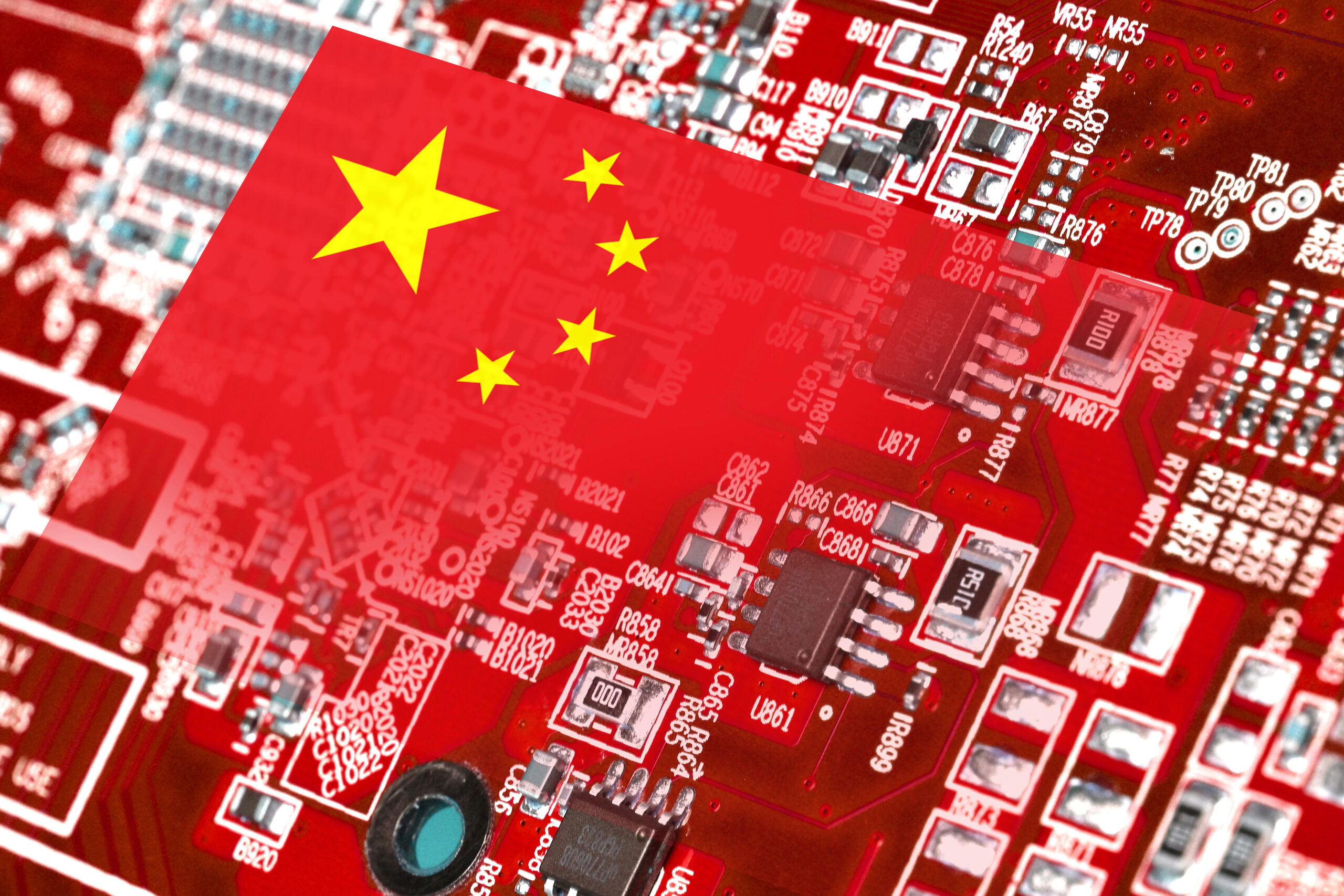In the recent update on the landscape of global technology and trade, China’s accelerates the push for domestic chip production. The nation’s strategic pivot comes in direct response to anticipated U.S. trade policies under the incoming Trump administration. This calculated move aims to fortify China’s technological independence and shield its burgeoning tech sector from potential sanctions or tariffs. By investing heavily in semiconductor manufacturing capabilities, China is not only reducing its reliance on foreign technology but also positioning itself as a formidable player in the global tech arena. Understanding these developments is crucial for anyone involved in international business, technology, or policy-making.
China‘s Semiconductor Ambitions Amid U.S. Trade Policies

Accelerating Domestic Chip Production In Response to U.S. Trade Policies
China is ramping up its efforts to boost domestic semiconductor manufacturing in response to anticipated U.S. trade policies. This strategic move aims to reduce the country’s reliance on foreign technology and insulate its tech sector from potential disruptions. By investing heavily in chip production capabilities, China seeks to establish a robust, self-sufficient semiconductor industry that can withstand geopolitical pressures.
Key Drivers of China‘s Semiconductor Push
Several factors are fuelling China’s urgency to enhance its chip-making prowess:
Technological independence: Reducing reliance on foreign semiconductors is crucial for China’s long-term technological advancement.
Economic security: A strong domestic chip industry can help shield China’s economy from potential U.S. sanctions or tariffs.
Global competitiveness: By developing cutting-edge semiconductor technology, China aims to position itself as a leader in the global tech landscape.
Challenges and Opportunities of the U.S. Trade Policies on Semiconductor Production
While China’s semiconductor ambitions are ambitious, the road ahead is not without obstacles. Catching up with established industry leaders requires significant investments in research and development, as well as overcoming technological hurdles. However, this push also presents opportunities for innovation and collaboration within China’s tech ecosystem, potentially fostering breakthroughs in chip design and manufacturing processes.
Investing in Domestic Chip Production: China‘s Strategic Moves Curbing U.S. Trade Policies
Boosting Self-Sufficiency
China’s push to enhance its domestic semiconductor production is a calculated move to reduce dependence on foreign technology. By investing heavily in its chip manufacturing capabilities, the nation aims to create a robust, self-reliant tech ecosystem. This strategy not only strengthens China’s position in the global tech industry but also acts as a buffer against potential U.S. sanctions or tariffs.
Key Investment Areas
The Chinese government is channeling significant resources into several critical aspects of semiconductor production:
Advanced manufacturing facilities
Research and development of cutting-edge chip designs
Talent acquisition and training programs
Supportive policies and incentives for domestic chip companies
Long-Term Implications Maneuvering U.S. Trade Policies
This accelerated investment in domestic chip production could have far-reaching consequences for the global tech landscape. As China ramps up its capabilities, it may reshape supply chains and alter the balance of power in the semiconductor industry. Moreover, this push for self-sufficiency could potentially lead to increased competition and innovation in chip technology worldwide.
By focusing on building a robust domestic semiconductor industry, China is not only preparing for potential trade tensions but also positioning itself as a formidable player in the future of global technology.
Reducing Reliance on Foreign Tech: China‘s Path to Self-Sufficiency
China’s push for semiconductor independence is a strategic move to decrease its vulnerability to external pressures and ensure technological autonomy. This initiative encompasses several key areas:
Boosting Domestic Production Capacity
China is investing heavily in expanding its chip manufacturing facilities. By increasing production volume and improving yields, the country aims to meet a larger portion of its domestic demand. This expansion includes both traditional silicon-based semiconductors and emerging technologies like compound semiconductors.
Fostering Innovation through R&D
Substantial resources are being allocated to research and development in semiconductor technology. Chinese universities and tech companies are collaborating to advance chip design capabilities, develop new materials, and improve manufacturing processes. This focus on innovation is crucial for closing the technological gap with global leaders.
Cultivating a Skilled Workforce
Recognizing the importance of human capital, China is prioritizing education and training programs in semiconductor-related fields. Universities are expanding their electrical engineering and materials science departments, while companies are offering internships and apprenticeships to nurture the next generation of chip designers and engineers.
Strategic Acquisitions and Partnerships
To accelerate its progress, China is pursuing strategic acquisitions of foreign semiconductor companies and forming partnerships with global industry leaders. These collaborations provide access to advanced technologies and expertise, helping to jumpstart China’s domestic capabilities.
Safeguarding the Tech Sector: China‘s Response to Potential U.S. Actions And Trade Policies
Bolstering Domestic Semiconductor Production Amid U.S. Trade Policies
China’s strategic move to accelerate chip production is a direct response to anticipated U.S. trade policies. By investing heavily in its domestic semiconductor industry, China aims to reduce its dependence on foreign technology and insulate its tech sector from potential disruptions. This proactive approach demonstrates China’s commitment to technological self-reliance and economic stability in the face of geopolitical uncertainties.
Mitigating Risks and Ensuring Continuity
The intensification of China’s chip manufacturing efforts serves as a buffer against possible U.S. sanctions or tariffs. By developing a robust domestic supply chain for semiconductors, China can better weather trade tensions and maintain the momentum of its rapidly growing tech industry. This strategy not only safeguards China’s technological advancements but also positions the country as a formidable player in the global semiconductor market.
Long-term Implications for Global Tech Landscape
China’s accelerated push for semiconductor self-sufficiency could reshape the global tech industry dynamics. As the country ramps up its production capabilities, it may eventually compete with established chip manufacturers, potentially altering supply chains and market shares. This shift could have far-reaching consequences for international tech companies and may influence future trade negotiations between China and the United States.
The Global Implications of China‘s Accelerated Chip Production
Shifting the Balance of Power in Tech
China’s push to ramp up domestic semiconductor production is poised to reshape the global technology landscape. As the world’s second-largest economy invests heavily in chip manufacturing capabilities, we’re likely to see a significant shift in the balance of power within the tech industry. This move could potentially reduce China’s reliance on foreign semiconductors, altering global supply chains and trade dynamics.
Economic Ripple Effects
The acceleration of China’s chip production efforts will undoubtedly have far-reaching economic consequences. As Chinese-made semiconductors become more prevalent, we may witness increased competition in the global market, potentially leading to price fluctuations and affecting profit margins for established chip manufacturers. Additionally, countries heavily invested in semiconductor production, such as South Korea and Taiwan, might face challenges as China emerges as a formidable competitor.
Geopolitical Tensions and Technological Independence
China’s drive for self-sufficiency in chip production is likely to exacerbate existing geopolitical tensions, particularly with the United States. As China reduces its dependence on foreign technology, it may gain more leverage in international negotiations and become less vulnerable to potential trade restrictions or sanctions. This push for technological independence could also spark a new era of innovation and competition, as nations vie for dominance in the critical semiconductor sector.
Key Takeaways
China’s proactive approach to semiconductor production reflects a strategic vision for technological independence. By accelerating chip manufacturing capabilities, the nation is not only safeguarding its tech industry but also positioning itself as a formidable player in the global market. This move underscores the intricate relationship between technological advancement and geopolitical strategy. As trade policies continue to evolve, China’s efforts to achieve self-sufficiency in chip production will likely have far-reaching implications for the global tech landscape. Stay informed about these developments, as they may significantly impact international trade dynamics and the future of technology worldwide.
More Stories
Android Instant Apps Retired After Years of Low Adoption
Google decides to retire Android Instant Apps by December 2025 as they struggled to capture user interest since its launch in 2017.
OpenAI Cracks Down on State Sponsored Abuse of ChatGPT
OpenAI has taken a decisive step to thwart state-sponsored exploitation of its ChatGPT technology. As detailed in a comprehensive threat intelligence report, OpenAI has disabled numerous accounts implicated in cyber operations orchestrated by state actors from countries including Russia, China, and North Korea.
Record‑Breaking Rupiah Loan Powers AI‑Ready Batam Data Hub
They secured a historic record-breaking Rupiah 6.7 trillion loan from financial giants DBS and UOB. This monumental financing supports an AI-ready data center campus at Batam’s Nongsa Digital Park.
Threads Unveils Native DM Test to Break Instagram Dependency
By unveiling a native DM (direct messaging) feature, Threads aims to sever its dependency on Instagram for private communications, a shift poised to redefine how users interact within the platform.
Google Closes Loophole That Let Hackers Bruteforce Your Hidden Phone Number
Recently, Google took decisive action to close a significant vulnerability that could potentially expose users’ hidden phone numbers to malicious actors.
Instagram Edits Brings In-App Teleprompter to Boost Creator Confidence
Introducing the in-app teleprompter within Instagram Edits, a tool designed to bolster your on-camera confidence and enhance viewer engagement.


